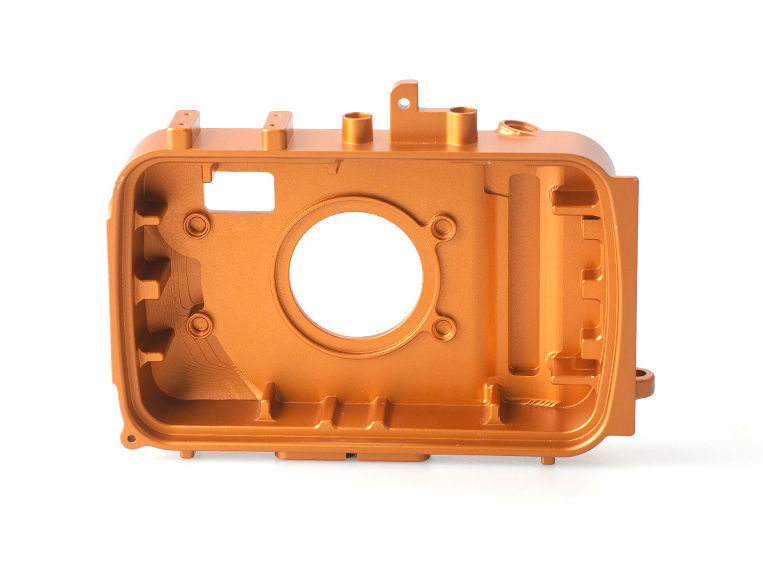Custom Aluminum CNC Machining for Premium Consumer Electronics Components
Introduction
Precision-engineered, aesthetically appealing, and durable components are essential in the highly competitive consumer electronics market. With its lightweight nature, excellent machinability, and superior aesthetic qualities, aluminum has become the material of choice for premium electronics. This case study highlights our expertise in Custom Parts CNC Machining of aluminum, exploring the typical machining processes, material characteristics, common surface treatments, industry applications, and the associated advantages and limitations.
Typical Machining Process
Our CNC Machining Service for aluminum components in consumer electronics typically involves:
CNC Milling Service: Provides precision and complex geometries for casings, enclosures, and frames.
CNC Turning Service: Ideal for cylindrical and rotational components requiring accuracy and symmetry.
CNC Drilling Service: Accurate hole positioning for component assembly.
Multi-Axis Machining Service: Allows production of complex, precision-engineered geometries.
CNC Grinding Service: Achieves smooth, aesthetically appealing finishes required in premium consumer products.
These processes ensure high-quality aluminum components tailored to precise consumer electronics specifications.
Aluminum Materials Overview
Common aluminum alloys utilized in consumer electronics manufacturing include:
Aluminum 6061: Offers excellent strength, machinability, and anodizing properties.
Aluminum 7075: Known for high strength and fatigue resistance, ideal for durable components.
Aluminum 5052 and 6063: Chosen for superior surface finishes, suitable for external cosmetic parts.
Each aluminum alloy provides specific benefits, making them suitable for varied electronics component requirements.
Common Surface Treatments
Surface treatments enhance both durability and aesthetics of aluminum electronics components:
Anodizing: Enhances corrosion resistance and provides attractive color options.
Sandblasting: Offers uniform matte finishes and improved surface texture.
Powder Coating: Provides durable, colorful, and protective finishes.
Electroplating: Increases component lifespan and aesthetic appeal.
Choosing appropriate treatments is essential to ensure consumer electronic components' visual appeal and functional durability.
Industry Applications
Custom CNC machined aluminum components are prominently featured in premium consumer electronics, including:
Smartphone and Tablet Casings: Lightweight, durable, aesthetically pleasing external housings.
Laptop Bodies and Frames: Robust yet sleek components enhancing durability and performance.
Wearable Devices: Precision-engineered frames and components offering both aesthetics and lightweight strength.
Audio and Gaming Devices: High-quality, aesthetically appealing external components requiring precision machining.
The Consumer Products industry values aluminum CNC machining for its reliability, precision, and premium finish quality.
Advantages and Limitations
Advantages:
The exceptional strength-to-weight ratio is crucial for portable devices.
Superior machinability allows complex, precision-engineered components.
High-quality aesthetic appeal enhancing product value.
Good thermal conductivity was beneficial for electronics cooling.
Limitations:
Potential susceptibility to scratching or denting without appropriate surface treatments.
Possible galvanic corrosion when paired with incompatible materials without proper insulation.
Requires skilled machining and precise control to achieve premium finishes.
Despite these limitations, aluminum’s extensive benefits strongly support its selection in high-end consumer electronics.
Why Aluminum is Ideal for CNC Machining
Aluminum's popularity in CNC machining arises primarily due to its optimal balance between machinability, strength, and weight. It efficiently dissipates heat, ensuring electronic devices remain cool during prolonged use. Moreover, aluminum’s ability to maintain structural integrity under stress makes it particularly beneficial for devices that undergo daily use and handling.
Choosing the Right CNC Machining Process
Selecting the correct CNC machining method depends significantly on the design complexity and functional requirements. While CNC milling is excellent for intricate housing and enclosures, CNC turning is ideal for symmetrical components such as buttons and knobs. Multi-axis machining caters to highly sophisticated and precise parts commonly found in compact consumer electronics. Additionally, surface grinding enhances visual quality by achieving precise dimensional accuracy and smooth surfaces.
Ensuring Durability with Surface Treatments
The surface treatment chosen for CNC machined aluminum parts significantly impacts their longevity and appearance. Anodizing creates a protective oxide layer, shielding the part from environmental factors and wear, thus ideal for consumer electronic devices frequently exposed to touch and friction. Sandblasting provides consistent, matte textures suitable for reducing fingerprints and surface reflections. Powder coating offers vibrant colors and high durability, often preferred for brand identity and visual appeal. Electroplating enhances corrosion resistance and imparts a luxurious appearance to premium products.
Precision in Consumer Electronics
Consumer electronics demand extreme precision to achieve seamless assembly and superior performance. CNC machining offers unparalleled accuracy and repeatability, essential for mass production while maintaining tight tolerances. Premium brands leverage aluminum CNC machining to guarantee consistently high-quality products, enhancing consumer trust and brand loyalty.
Sustainability and Recyclability
Aluminum CNC machining supports sustainability initiatives due to aluminum's recyclability. Recycling aluminum consumes significantly less energy than new material production, aligning with consumer demands for environmentally responsible manufacturing. Companies utilizing CNC-machined aluminum components can emphasize sustainability in their brand positioning, appealing to eco-conscious consumers.
Future Trends in Aluminum CNC Machining
Innovations in CNC machining technologies continually advance aluminum’s potential in electronics manufacturing. Enhanced software for multi-axis machines, improved tooling for higher precision, and faster processing speeds contribute to reduced production times and improved component quality. These advancements enable manufacturers to deliver innovative, highly sophisticated aluminum components essential for next-generation electronics.
FAQs
Why is aluminum preferred for consumer electronics components?
What CNC machining processes are optimal for aluminum electronic parts?
How do surface treatments enhance aluminum electronic components?
What considerations are essential when machining aluminum for electronics?
Which aluminum alloys are best suited for premium electronic components?

